Inspirations for the KASE Workshops
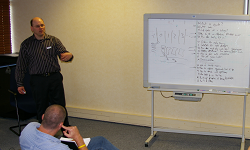
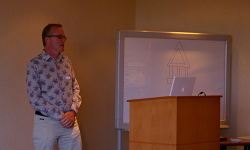
The KASE Workshops are inspired by two techniques or approaches, namely:
- Cafe Conversations
- The Bauhaus Workshops
Systems thinking is both an art and science. It is essential to innovation and developing capacity to innovate. In today's global knowledge economy it is essential to collaborate and develop social methods for knowledge creation. Cafe Conversations are ideal for bringing people together to discover a common vision and to explore new thoughts and ideas. In a developing continent like Africa, there is a need to also gain insights and skills into modern industrial thinking but at the same time retain our own value based systems thinking that will make Africa a unique centre of learning and innovation. The lessons from the Bauhaus of the 20th century are therefore applicable and relevant to the 21st century.
Cafe Conversations

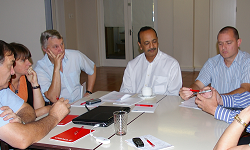
Cafe Conversations is a technique of The World Cafe www.worldcafe.org. We have been exponents of this approach for many years and have used it in various initiatives. More recently, we have developed a Monthly Breakfast Forum with the CIO Forum in Cape Town www.cioforum.co.za using this format.
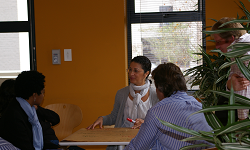
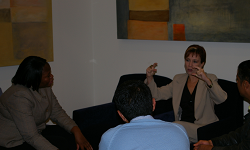
We invite guest speakers who provide context for our discussions. We then pose a question and have groups of "table" conversations and a collective group discussion. The aim is to find the one voice that is coming from the group discussion. Creating the right atmosphere, visualization and facilitation are key roles, hence, you will find that there are 3 important roles to a Cafe Conversation:
- The Host
- The Facilitator
- The Visualizer
Visualization Technique

John Roodt has spent a number of years developing his visualization skills, techniques and the application of Cafe Conversations. Tables are usually covered in paper and have pens or markers available for people to write out any thoughts.
The Bauhaus Workshops
The Bauhaus School of Arts was founded by Walter Gropius in Germany from 1919 to 1923. The closure of the school by the Nazis in 1933 began the spread of Bauhaus ideas across Europe and the United States. The Bauhaus inspired a revolution in design and art education that is still present today. The Bauhaus movement helped to define modernism in the 20th century.
The Bauhaus established the workshop-based training that revolutionized art education and is used to this day. As Gropius explained in an interview, "I realized that closer links had to be forged between the machine and the artistic individual. So I established workshops, which trained people in two ways - as artists and as craftsmen. It's often wrongly thought that everything was based on handicraft. In fact, it was a place of preparation. You can't understand a machine until you've understood the tools of your craft."
The Foundation Course
The "foundation course" taught in art schools is a product of the Bauhaus. Wolf von Eckardt stated that the Bauhaus "created the patterns and set the standards of present-day industrial design; it helped to invent modern architecture; it altered the look of everything from the chair you are sitting in to the page you are reading now."
Many of the ideas at the Bauhaus were not unique. Since the industrial revolution, educated men and women were contemplating the problems associated with art and its relevance in the new era of the machine. What made the Bauhaus teaching unique, particularly with regards to the foundation course or Vorkurs, was "the amount and quality of its theoretical teaching, the intellectual rigor with which it examined the essentials of visual experience and artistic creativity."
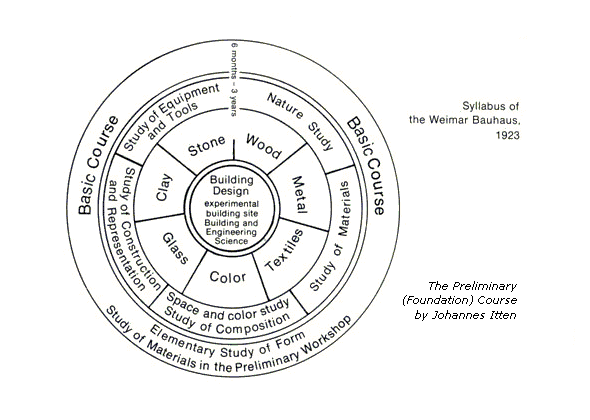
Johannes Itten established the Preliminary or Foundation Course at the Bauhaus. Itten followed a religion based on eastern beliefs called Mazdaznan. Adopting principles from Buddhism, Itten would begin his workshops with breathing exercises. He encouraged his students to study materials and textures by working with materials they could find, feel and touch.
Unlike previous preliminary art education, which taught art history and the problems that were encountered in the past, the preliminary course was about learning abstract forms, color theory, nature of materials and other principles of art and design. The primary focus was on the individual student (senses, emotions and intellect) and assisting them to learn about themselves before deciding on a specific direction. Students were encouraged to go out and get any material they could find and study its nature and produce work from their exploration. It was an economically hard time and students had to go out to dump yards or use whatever was available. Some innovative designs were created.
Itten stated that, "Imagination and creative ability must first of all be liberated and strengthened. Once this has been achieved, technical and practical demands and finally commercial considerations may be introduced. Young people who begin with market research and practical and technical work seldom feel encouraged to search for something really new. If new ideas are to assume artistic form, physical, sensual, spiritual, and intellectual forces and abilities must all be equally available and act in concert. This realization largely determined the subjects and methods of my teaching at the Bauhaus. It was essential to build up the individual student as a well-integrated creative person, a program I consistently advocated in the 'Council of Masters'."
Master of the Workshop and Master of Form
At the Bauhaus there were two types of teachers or “Masters”. The "Workshop Masters" were skilled craftsmen. They were usually skilled in various disciplines but they taught specific crafts such as painting, pottery, weaving or architecture. There were also the "Masters of Form" who were responsible for aesthetic qualities.
The modern painters provided the constructive thinking. They worked with space and form. Gropius explained that he thought the painters could help usher in a new Constructivist thought in architecture. He said, "We have to pull the whole thing together. We have to destroy the separations between painting and sculpture, architecture and design and so on. It is all one."